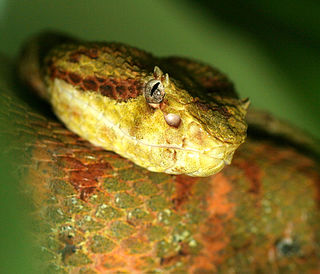 W
WAbronia bogerti, known by the common name Bogert's arboreal alligator lizard, is a species of lizard in the family Anguidae. The species is endemic to Mexico.
 W
WThe Algerian three-toed skink is a species of "grass-swimming" skink with an elongated serpentine shape and reduced limbs. It is endemic to north-western Africa.
 W
WThe black-knobbed map turtle, formerly known as the black-knobbed sawback, is a small to medium-sized aquatic turtle with light gray skin. Some of the most distinguishing characteristics of the black-knobbed map turtle, and the Graptemys genus, are the protruding "spikes" on the turtle's carapace. This species inhabits mainly the fall lines of rivers in the Mobile Bay drainage, in Alabama and Mississippi.
 W
WBothriechis supraciliaris, the blotched palm-pit viper, is a species of venomous snake in the family Viperidae. The species is endemic to Costa Rica.
 W
WBothrops brazili is a venomous pitviper species endemic to South America. No subspecies are currently recognized.
 W
WThe Santa Catalina rattlesnake is a species of venomous pit viper endemic to Isla Santa Catalina in the Gulf of California just off the east coast of the state of Baja California Sur, Mexico. No subspecies are currently recognized. A relatively small and slender species, its most distinctive characteristic is that it lacks a rattle.
 W
WKoch's giant day gecko is a diurnal subspecies of gecko, a lizard in the family Gekkonidae. The subspecies is native to northwestern and western Madagascar and typically inhabits trees. It feeds on insects and nectar.
 W
WThe Karasburg tree skink is a species of skink found in Namibia, South Africa, and Botswana.
 W
WVipera monticola is a venomous viper species endemic to Morocco. No subspecies are currently recognized.
 W
WThe yellow-blotched map turtle, or yellow-blotched sawback, is a species of turtle in the family Emydidae. It is part of the narrow-headed group of map turtles, and is endemic to the southern United States.